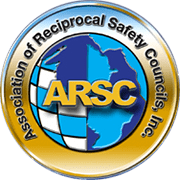by Sylvia Villarreal
Administrator, Association of Reciprocal Safety Councils
I have been that person who did not take Covid-19 as seriously as I should. Because I took every precaution required to keep myself and my family safe from contracting the virus, I thought that I wouldn’t get it. Boy was I wrong! I unfortunately still fell victim to it. Like most everyone else, I had no clue where I could have contracted the virus. This is my story, and how the virus personally affected me.
In mid-December, I started feeling my allergy symptoms again. I am prone to seasonal allergies and can quickly recognize it if it is just simple allergies. These allergies require me to take over the counter medicine. That evening, I began to feel very tired, more so than usual. I brushed it off as just having a long day, and I was simply mentally drained. The next morning, still dealing with the sniffles, sneezing, and coughing, I got up and went to work. I figured my allergy medication should have or would be kicking in at any moment.
